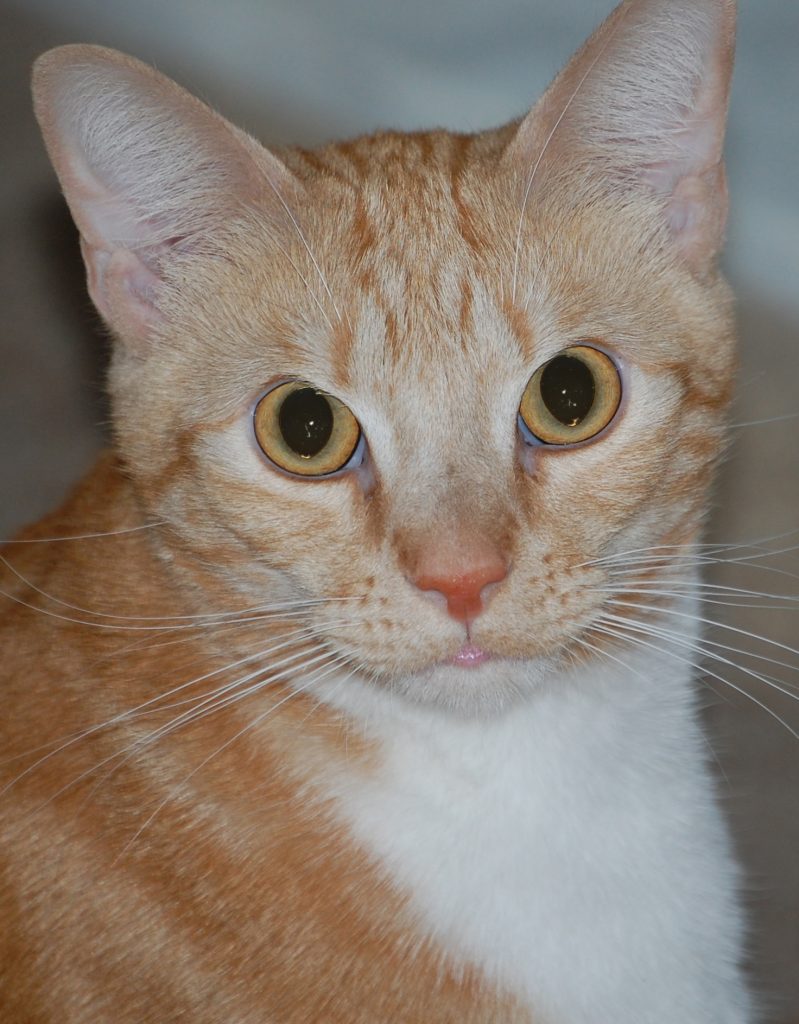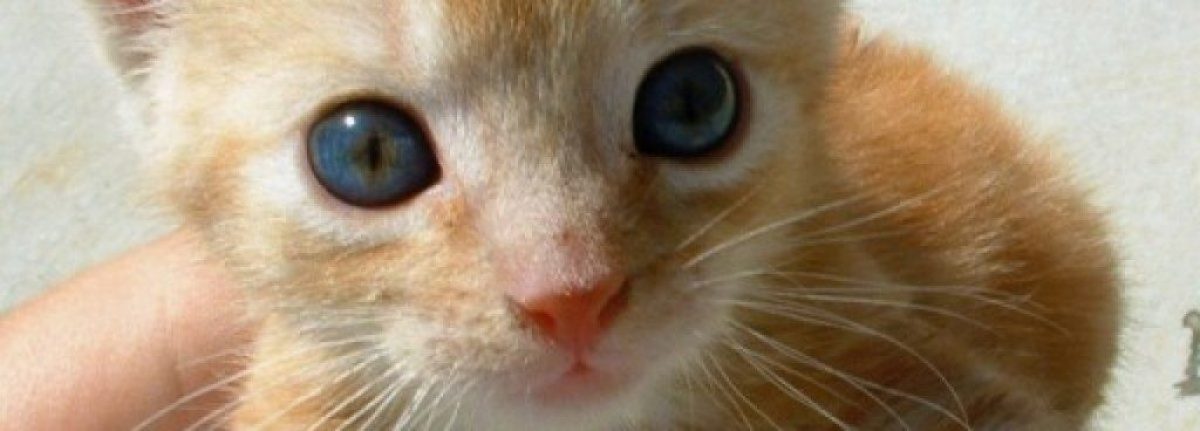Milo was the beginning of our involvement with feral cats and our first exposure to one. So exactly how did Milo come into our life? Well, one morning as I sat on the porch of our new home, I watched a small tortoiseshell cat moving kittens from the brush near the road to lower ground near the side of our house. I watched as she went to retrieve the last one, soon to become known as Milo.
The kitten was quite a bit larger than its four litter mates. He was nearly twice their size. When the mama cat picked Milo up by the scruff, she had difficulty lifting him completely off the ground. She dragged and dropped him several times and then picked him back up to try again in efforts to accomplish her task. He made matters worse, because he fought her the whole way. Every time she picked him up he would scream loudly at her and flail his legs in attempts to fight her. Not only that, but Milo was so big that she had difficulty stepping over small branches and rocks which were in her path. After several minutes she finally successfully reunited him with his litter mates where he would have nothing to do with them.
Mama cat camped with her babies at the side of our house that day and night, but by the next morning she started relocating them again. She moved all the small kittens, but this time she didn’t come back for Milo. We waited and secretly watched for signs of her return. Twelve hours later we settled on the possibility that she wasn’t coming back for him. At 11:00 pm that night, we went into the woods and rescued him from beneath the tree. He was desperately seeking a place to nurse and his tiny eyes hadn’t opened yet. I slipped him into a small box and gave him a tiny stuffed bunny to cuddle into.
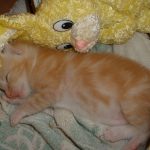
That night I used a syringe to give him fat free milk to get him through the night until I could get cat milk replacement the next day.
The next day we looked for his mommy. With no sight of her, we purchased a nursing bottle and milk replacement and started hand nursing him every 2 to 3 hours. This little baby screamed and fought with all his might to avoid nursing. Had his claws not been so soft our hands would have been marred with scratch wounds. He would fight, but then suddenly latch onto the bottle and drink the whole portion offered. When his eyes opened a few days later, fighting the bottle became worse and it was a real struggle to feed him, but then he would always suddenly latch onto the bottle and drink it all.
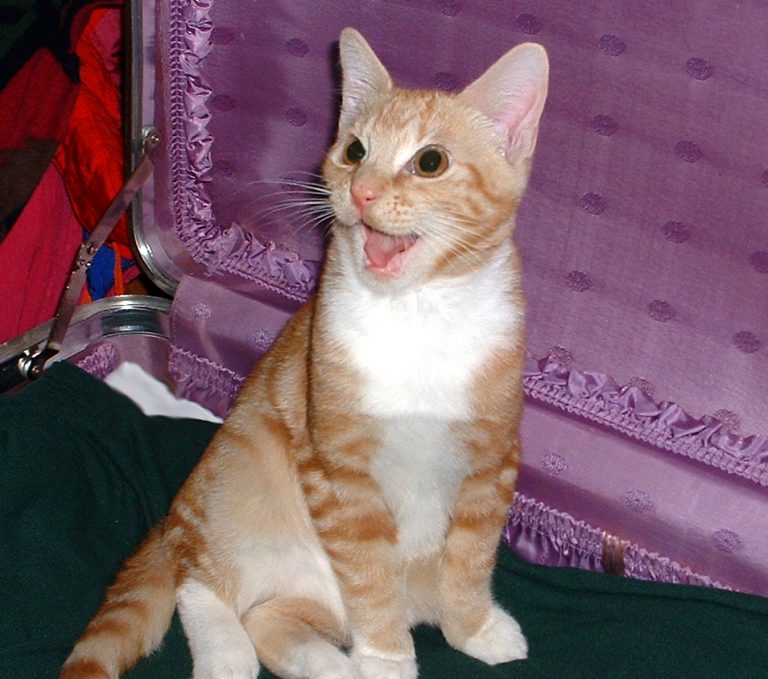
We had just moved into our new home, but for the next 4 months I commuted two and a half hours away for work. During that time, Milo traveled with me so that I could care for him throughout the day as needed, and so I could help him learn the things his mama would have taught him. He adapted to traveling and even learned when it was time to go. He would hop into my suitcase and then walk into his carrier when I set it out for him. But Milo fought me on most everything else. Even though he spent a lot of time in my lap, if I touched him he would latch onto my hand and arm and very viciously start biting and scratching.
As he grew, Milo set the terms of his interactions with others. He was always rough with us and his involvement with others included absolutely no interactions with them at all. Whenever we would try to lovingly pick him up, he would react with all claws out and ears flat, ready to fight with all his might. This behavior continued through most of his life.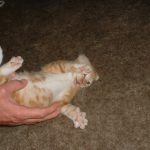
We thought Milo would out grow his distaste for being handled, but he didn’t like to be handled at all, and that never changed. During his first year or two I constantly had scratches on my arms and hands, but he had a very sweet demeanor as long as he was in control and called the shots.
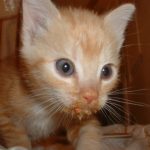
He also had strange eating habits. Back when first trying to introduce him to solid food, he didn’t take well to wet or dry food of any kind from his first exposure. Then, he finally settled into loving dry kibble and wanted it available to him at all times. One odd thing he always did was take a few pieces of kibble and drop it into his water bowl. He would then try to fish it back out. Thinking he wanted his kibble softened with water, I tried soaking it first, but he would have none of it. So we let him enjoy dropping it in his water and trying to get it back.
And so Milo became a fairly harmless fixture to be reckoned with in our home, where he befriended our 16 year old cat, Ferris, whose tail he loved to attack.
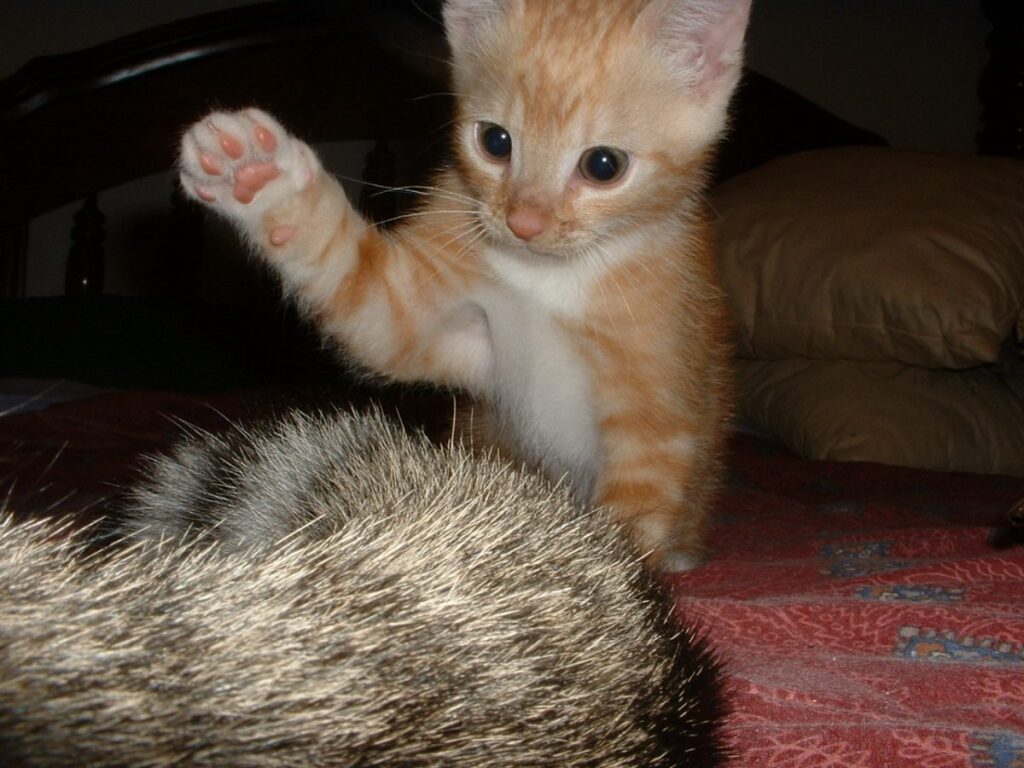
He and Ferris frequently shared what we called a game of Snake (string tug-o-war).
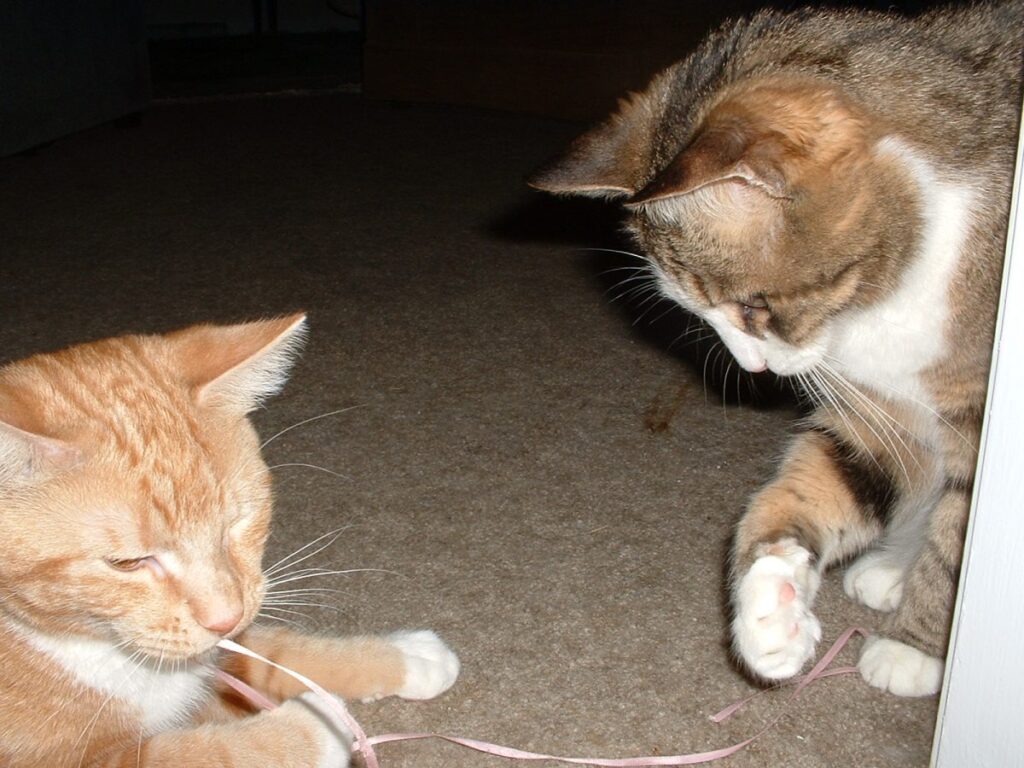
Milo’s aggression when interacting with us mostly diminished as he matured, and as we learned the limitations and boundaries he had set. We all learned to live peacefully together and day-to-day life set in. Milo chose the home office as his permanent place of residence where the sun shines brightly through the window in the mornings, and where most of my time is spent. He sometimes enjoyed helping me work.
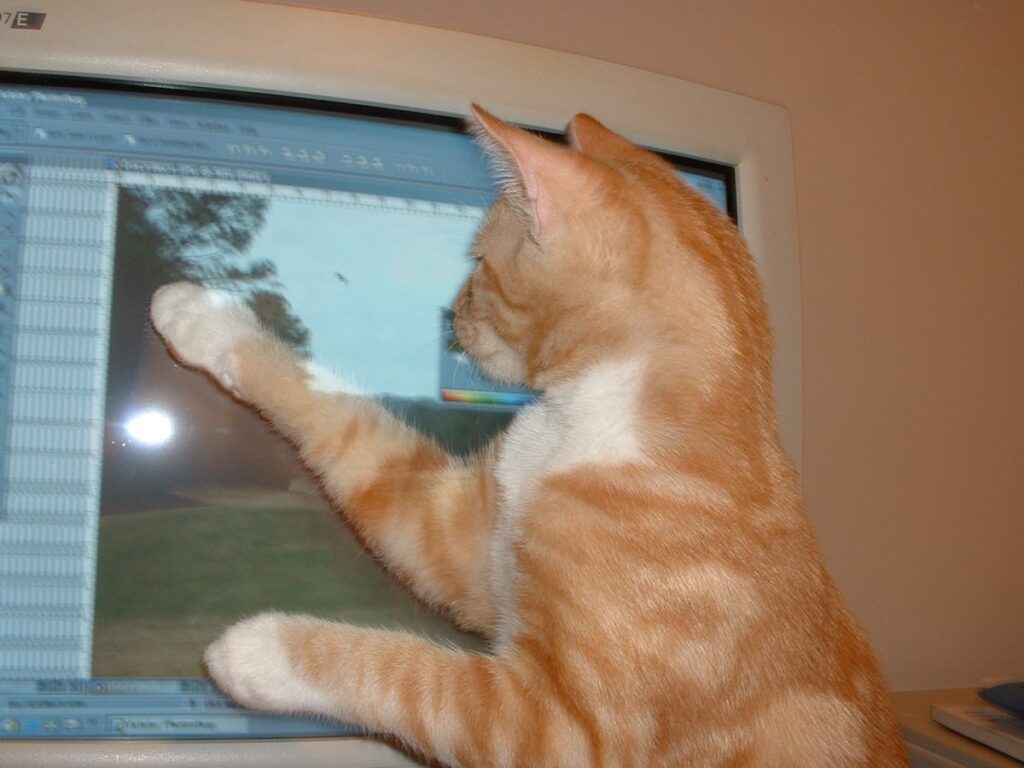
Still, during play, Milo was always more than a little aggressive, frequently latching onto our legs. He would kick our feet as he wrapped around our legs, but unlike most cats that do this, Milo didn’t retract his claws. As a result, we also had love scratches on our feet and legs from time to time. We knew he was playing, though, and engaged in play with him frequently.
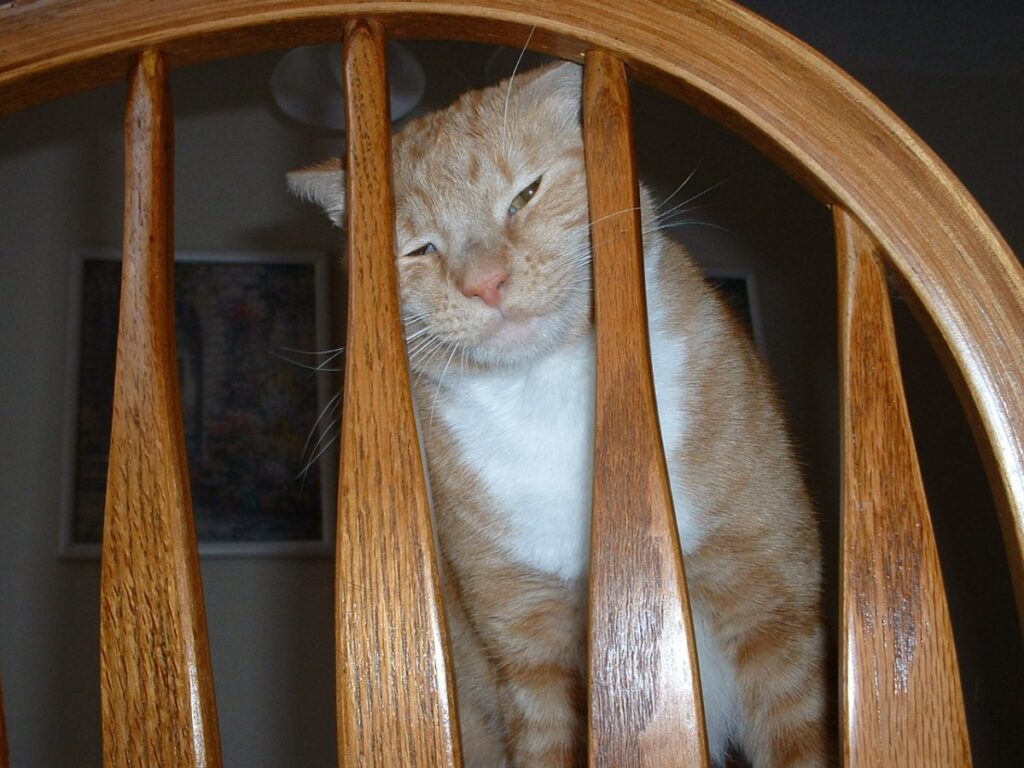
There of course were a few occasions where he had to have a vet visit. As it turned out he had a bit of asthma. He gave us a scare on more than one occasion; once with a very bad asthma attack that caused him difficulty breathing, and once with a very bad cat flu. Both of those vet visits were a nightmare due to his “red zone” mentality. Due to this, the veterinarian’s handling of Milo was treated with equal aggression, unfortunately, and much to my dismay. I am sure this resulted in further instilling in Milo’s mind the idea that vet visits were a time to fight. I, of course, had no difficulty administering medications when needed, and I learned to give vaccinations to alleviate the stress of vet visits.
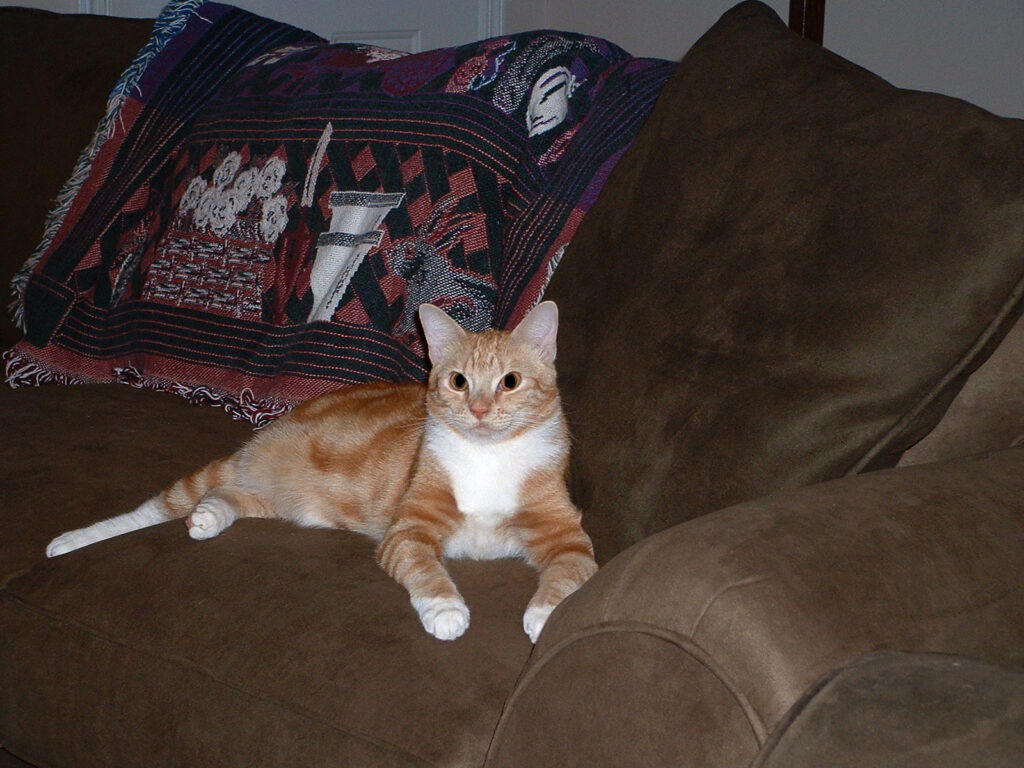
And so Milo became the respected King of his Domain, setting his rules as he grew; such as which spot on the sofa was his alone.
He grew quickly and was always a very stout and hefty cat. At one time he weighed in at 16 pounds. He was so large that he barely fit in the bed he loved so much. Still, he spent his days in his bed next to my desk in our home office. At night he was up and about chasing other cats through the house after lights out.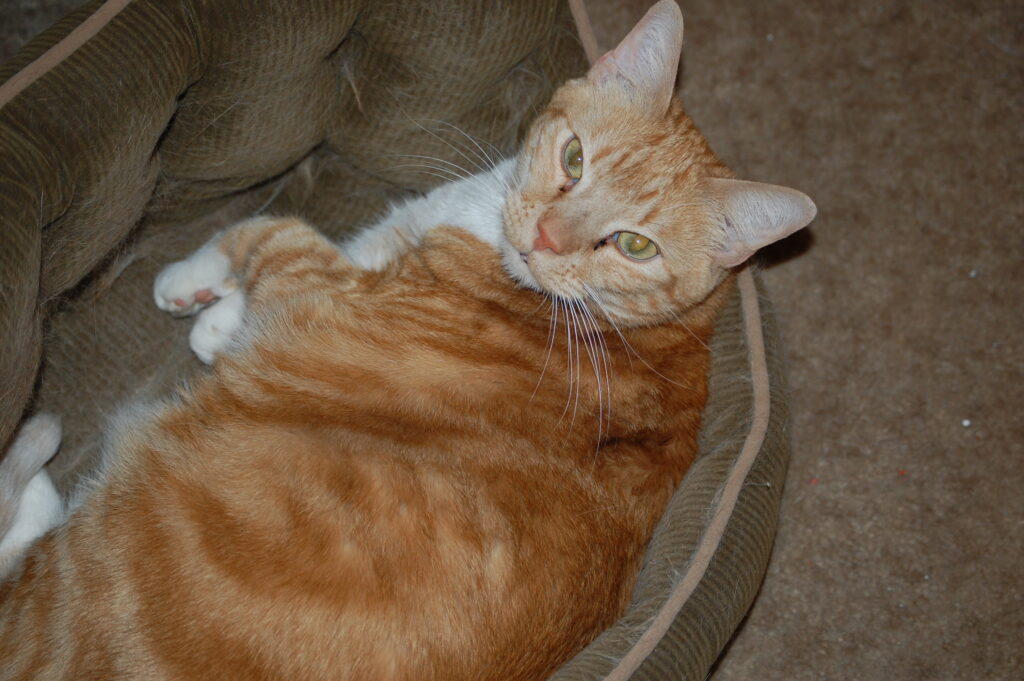
We had many enjoyable years with Milo. Unfortunately, during 2016, Milo’s thirteenth year, he suddenly began to lose weight and became overly loving and affectionate with me.
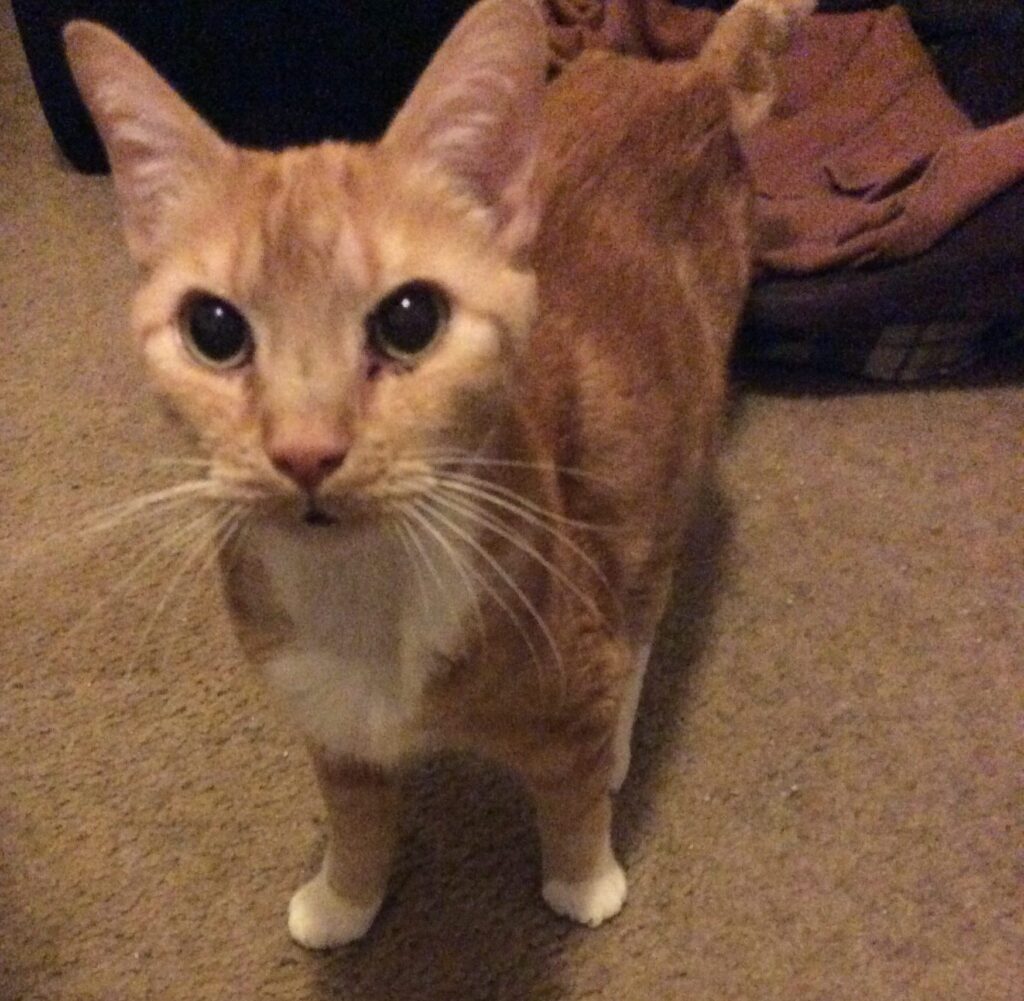
He wanted pets, hugs and kisses every time I walked in the room. Many times I would just lie on the floor and cuddle with him.
The weight loss alone warranted a vet visit, but coupled with the “loving” behavior change made it even more urgent. You can see in this image how much weight Milo had lost. He had gone from 16 pounds to 14 pounds to 11 pounds even though he was eating normally.
After much discussion about how to handle a “Milo” visit with his vet, an appointment was finally scheduled with a plan in place. He would be sedated for a very thorough examination. The visit went well and by May 2016 he was diagnosed with diabetes. All other blood work was normal. We initially tried to control or reverse the diabetes with a wet food diet, but it was determined that more than likely he had had diabetes for some time. This meant that it might be impossible for remission of the diabetes to take place. Therefore, insulin would be necessary.
By September we had gotten into a routine with diabetic management and Milo seemed to be adapting without a problem. He looks very content here in the sun and had begun to gain some weight back. He was beginning to play and groom again.
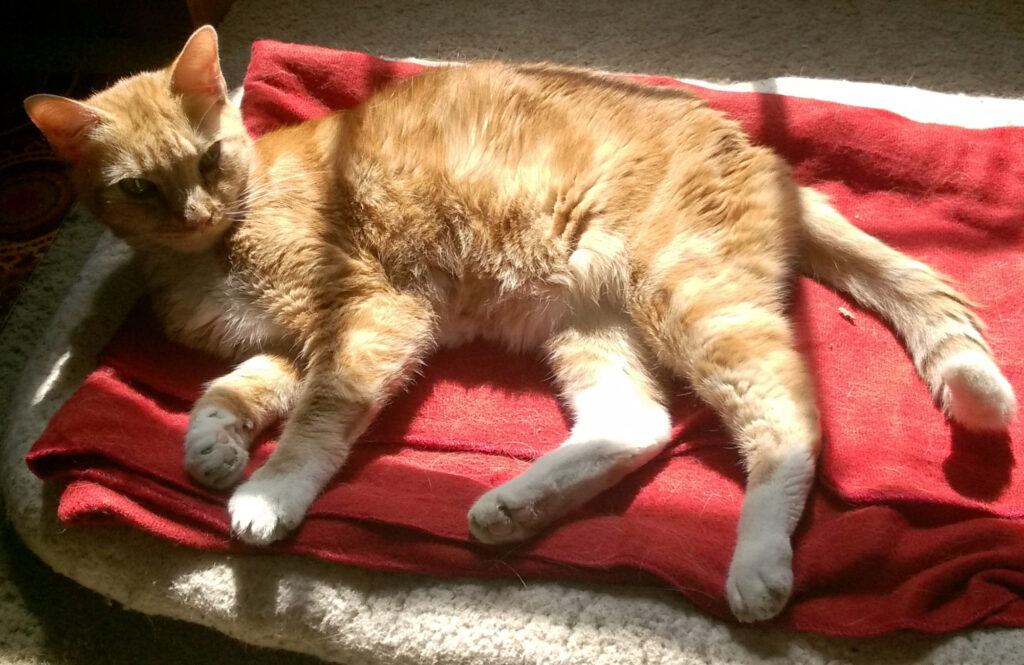
Since Milo was too aggressive to allow a diabetic “curve” to be done at the veterinarian’s office, I had to perform the “curve” at home. Surprisingly, Milo was very cooperative and with the glucose levels I obtained over a 24-hour period, the veterinarian was able to determine an insulin dosage and prescribed insulin. Through all of this, Milo was very cooperative with me and had no problems with ear pricking for blood sugar levels. He never lashed out at me with aggression when receiving his daily insulin shots.
From June until January, Milo cooperated and then toward the middle of January he began to be grumpy about the shots. He also began sleeping more and occasionally lying out flat on the floor to rest instead of lying in his bed. On February 1st Milo had a very bad hypoglycemic episode with a reading of 31. I immediately responded with Karo syrup as instructed by the veterinarian. Still, due to his aggressiveness and against my better judgement, the vet said it wouldn’t be necessary to see him and that I should continue with his treatment as prescribed. Unfortunately, he had another hypoglycemic episode the very next day. Still the veterinarian wouldn’t see him due to Milo’s aggressive mentality.
So on February 2nd, after the second episode, Milo quit eating and drinking on his own. I was instructed by the veterinarian to syringe feed food and water, and that it may take a few days for him to recover; that due to his aggressiveness it wouldn’t be possible to see him; that I should continue his insulin with no changes.
For the next 2 weeks we went from syringe feeding Milo to providing subcutaneous fluids, after repeatedly being told by the veterinarian that he was too aggressive to be treated successfully at his office. The vet told me that to put the stress of a vet visit on the cat would kill him, and that to also sedate the cat would kill him. I felt as though my hands were tied from doing anything more than watching him deteriorate. The vet told me that Milo would have to be very weak in order for him to treat him. Milo was losing ground quickly.
Although I resorted to trying to get Milo strong enough to seek care for him elsewhere, at the University, I was losing the battle. He continued to weaken and by this time I was sleeping on the floor next to him most every night. He finally reached a point where I wasn’t sure if he would make it through the night, and reluctantly, the veterinarian decided to see him. So we went. Milo was overly talkative, chirrup y, and purr y the whole way there. Once there, the vet indicated to me that he thought Milo had pancreatitis as well as hepatitis. So I gave Milo a kiss on top of the head, and as I was leaving, we locked eyes until the veterinarian picked him up and carried him to another room. Oddly, Milo didn’t fight the vet at all when picked up by him. So I had left Milo at the veterinarian’s office early that morning.
Later that day, I was called to come pick up Milo and bring him back the next day. I was told he was doing quite well, surprisingly. His IV fluids were completed for the day and the vet planned to draw blood at 5pm, after which I could bring him home and return him the following day for additional treatment. As I was leaving to go get him, the veterinarian called to let me know, “…bad news….Milo just crashed,” he said, “…he was sitting up when I left the room for five minutes and unresponsive when I returned.”
Milo was too weak to withstand the stress and aggressive IV fluid treatment the veterinarian put him under that day. It was too much, too harsh, and too late. My heart is only at peace because I know I did everything I could do to pull him through it, and because we had such a very loving ten months, on his terms, before he had to go.
He, in his way, lovingly blessed us with thirteen and a half years of his life. He amazed us each day with his intelligent behavior and surprising antics. There was never a dull moment with him and we were very saddened indeed when diabetic complications took him away from us.
I’m sure Milo would be saying, “Be sure to let everyone know all about cat diabetes and how they can help…” So watch this site for a new section about Feline Diabetes; the good insulin and the bad; possible complications, and links for help in caring for the diabetic cat.
